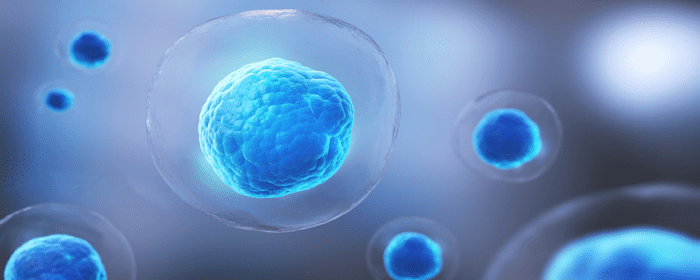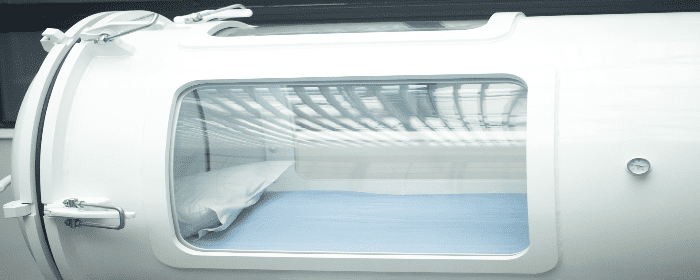
by admin | May 31, 2023 | Stem Cell Therapy, Regenerative Medicine
Neuropathic pain (NP) is a complex, wide-ranging, and often debilitating condition that contributes to chronic pain. Caused by a number of different factors and contributors, the condition most commonly involves disease, chronic condition, or injury to the nervous system.
Defined by the International Association for the Study of Pain (IASP) as pain that occurs as a direct consequence of a lesion or disease affecting the somatosensory system, NP is responsible for 20 to 25% of patients who experience chronic pain and is estimated to affect 8% of the population.
While there have been significant improvements in pharmacological and nonpharmacological treatment for NP, these practices only provide consistent and lasting pain relief to a small percentage of patients. Recently regenerative medicine, also known as stem cell therapy, is being explored as a safe and effective NP therapy option.
In this review, Joshi et al. explore the possibilities of using stem cells in NP patients and discuss the relevant challenges associated with their uses in this application.
After identifying and defining the nine most common conditions associated with chronic, persistent, or recurring NP, the authors begin this review by pointing out that NP, to date, has been poorly recognized, poorly diagnosed, and poorly treated. A review of relevant literature has also demonstrated that the treatment of NP has consistently been a significant challenge for physicians, with most attempting to manage NP by targeting clinical symptoms rather than causative factors.
Most often, pharmacological treatment approaches for managing NP have included a variety of first-line drugs (tricyclic antidepressants, serotonin-norepinephrine reuptake inhibitors, and gabapentinoids) and opioid analgesics (tramadol) as second-line drugs. Third-line pharmacological NP treatment includes stronger opioids, such as morphine and oxycodone. Nonpharmacological NP treatment options for drug-refractory NP include interventional therapies (peripheral nerve blockade and epidural steroid injection), physical therapies (massage and ultrasound), and psychological therapies (cognitive behavioral therapy).
Long believed to arise from neurons, recent studies have demonstrated the important role of immune system response in the development of NP. Specifically, immune cells were found not only to be the source of pain mediators but also to produce analgesic molecules. These findings led researchers to believe that neutrophils and macrophages could each have a major role in early NP development.
Research has indicated that nerve injuries trigger an organized series of events to mount an inflammatory response. As part of this response to injury, pain following nerve damage has been shown to be mitigated by cytotoxic natural killer cells that selectively clear out partially damaged nerves. Additionally, this research has increasingly demonstrated that the immune system interacts with the sensory nervous system, contributing to persistent pain states.
Pharmacological and nonpharmacological treatment approaches have only produced temporary pain relief in patients with NP. Recently, stem cell transplantation has demonstrated significant potential for repairing nerve damage in NP and has emerged as a potential alternative therapeutic treatment approach. While the exact mechanism underlying stem cell-mediated pain relief remains unclear, specific stem cells (human mesenchymal stem cells, or hMSCs) have demonstrated the potential to provide trophic factors to the injured nerve as well as the ability to replace injured or lost neural cells.
While stem cell-based therapies have been shown to protect against neurodegeneration and promote neuroregeneration, the authors point out several issues that need to be addressed. These outstanding issues include identifying the optimal dosing for stem cell transplantation in the treatment of NP, sourcing of stem cells, considerations of autologous versus allogeneic transplants, precommitment to neuronal lineage, and specific dosing requirements.
Joshi et al. conclude that while NP is a chronic heterogeneous condition of the sensory nervous system with no current curative treatment, stem cells present exciting therapeutic prospects for NP. While further research to understand the exact mechanism underlying stem cell-mediated pain relief is required, current literature provides evidence of the potential of stem cells in slowing the degeneration process while promoting the survival and recovery of damaged nerves.
Source: Stem Cell Therapy for Modulating Neuroinflammation in … – NCBI.” 3 May. 2021, https://www.ncbi.nlm.nih.gov/pmc/articles/PMC8124149/.

by admin | Jun 25, 2021 | Ozone Therapy
Significant advances in the treatment of cancer have increased the number of cancer survivors while also allowing survivors to live longer and with overall improved quality of life. However, these treatments have also resulted in an increase in the number of survivors now living with their debilitating side effects, the most prominent being chemotherapy-induced peripheral neuropathy (CIPN).
According to the American Cancer Society, CIPN often occurs when nerves located outside the brain and spinal cord are damaged as a result of chemotherapy treatments[1]. One of the many symptoms associated with CIPN is chronic oxidative stress, which results in a significant increase in free radicals and proinflammatory cytokines throughout the body. Common side effects of CIPN include dysesthesias, pain, anxiety, depression, insomnia, and fatigue.
It’s estimated that up to 85% of cancer patients are treated with neurotoxic chemotherapy, and up to 100% of those treated with platinum-based drugs (such as cisplatin, carboplatin, and oxaliplatin), develop CIPN. Not only does CIPN significantly affect a patient’s quality of life, should it develop during cancer treatment, the condition often interrupts and/or delays scheduled chemotherapy sessions.
This review, authored by Clavo et al., examines current cancer treatments potential mechanisms that could result in CIPN, summarizes current CIPN prophylactic and treatment approaches introduce and describes the role of ozone therapy in modifying oxidative stress and inflammation (with a specific focus on how it relates to CIPN), and summarizes experimental and clinical trials using ozone therapy to address the symptoms of CIPN.
Through the course of their review, the authors conclude that while there are several medications and therapies designed to address the inflammation and oxidative stress associated with CIPN, the results of their effectiveness in achieving the desired and/or intended effect(s) have been inconclusive. As a result, the authors conclude that prophylactic and therapeutic approaches to CIPN continue to be limited in both numbers and efficacy.
Ozone therapy is the process of introducing ozone gas into the body to treat an existing disease or medical condition. According to a study published in Medical Gas Research[2], ozone, when introduced into the body, creates higher concentrations of red blood cells, increases oxygen levels in the body, and produces an anti-inflammatory response. This process, when used to treat CIPN, is thought to be potentially effective in addressing the symptoms of the condition by inducing adaptive responses of tissues within the body.
The authors conclude their review by describing their current research examining the effect of ozone therapy on the analytical and symptomatic evolution of patients with CIPN. Specifically, this research will explore whether or not a relationship exists between the basal levels in oxidative stress parameters, including hyperspectral imagines (HSI), and the quality of life and symptoms self-reported by patients. The authors also call for further research to better understand the role of oxidative stress in CIPN as well as the clinical role of its modulation.
Source: (2021, March 10). Modulation by Ozone Therapy of Oxidative Stress in … – PubMed. Retrieved from https://pubmed.ncbi.nlm.nih.gov/33802143/
[1] (2019, November 1). What Is Peripheral Neuropathy? – American Cancer Society. Retrieved July 9, 2021, from https://www.cancer.org/treatment/treatments-and-side-effects/physical-side-effects/peripheral-neuropathy/what-is-peripherial-neuropathy.html
[2] (2018, September 25). Clinical utility of ozone therapy for musculoskeletal disorders. Retrieved July 9, 2021, from https://www.ncbi.nlm.nih.gov/pmc/articles/PMC6178642/

by admin | Jan 23, 2019 | Hyperbaric Oxygen Therapy
Recent evidence has been accumulating that suggests that hyperbaric oxygen
can improve neuropathic pain, or pain that results from injuries to the central
or peripheral nervous systems. Despite increasing evidence for the value of
hyperbaric oxygen in pain management, there has been little clarity on how
hyperbaric oxygen confers its benefits. A recent study,
published in the American Journal of
Translational Research, aimed to investigate the mechanisms by which
hyperbaric oxygen relieves neuropathic pain. Given that the traditional
treatments for neuropathic pain are associated with adverse side effects, the
researchers hoped to improve understanding of neuropathic pain so that better
treatment options can be developed.
Prior to this experiment, hyperbaric oxygen treatment had
been shown to preserve the integrity of muscle and nerves and also to inhibit
the activation of astrocytes, among other activities that could be relevant for
its impact on neuropathic pain. Indeed, astrocytes, for instance, are known to modulate
pain. For this study, the scientists hypothesized that hyperbaric oxygen
treatment is able to help with neuropathic pain largely based on its impact on
autophagy. Autophagy refers to the way that cells protect themselves from
harmful stimuli and environments. Once nerve injury occurs, autophagy is
impaired.
The researchers showed that indeed, hyperbaric oxygen
treatment was able to reduce the autophagy impairment that results from nerve
injury. They further showed the specific way that this reduction occurred,
which was through the inhibition of a specific pathway called the mTOR pathway.
These findings provide support for the potential use of hyperbaric oxygen in
the treatment of neuropathic pain. Future research will help to elucidate if
and precisely how this approach can be used to help those who suffer from this
type of injury-induced pain.
Reference
Liu, Y.D., Wang, Z.B., Han, G., & Zhao, P. (2017).
Hyperbaric oxygen treatment attenuates neuropathic pain by elevating autophagy
flux via inhibiting mTOR pathway. American
Journal of Translational Research, 9(5), 2529-2648.




 St. Petersburg, Florida
St. Petersburg, Florida
